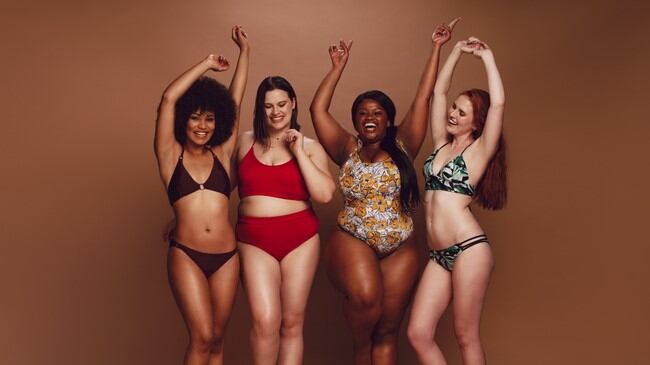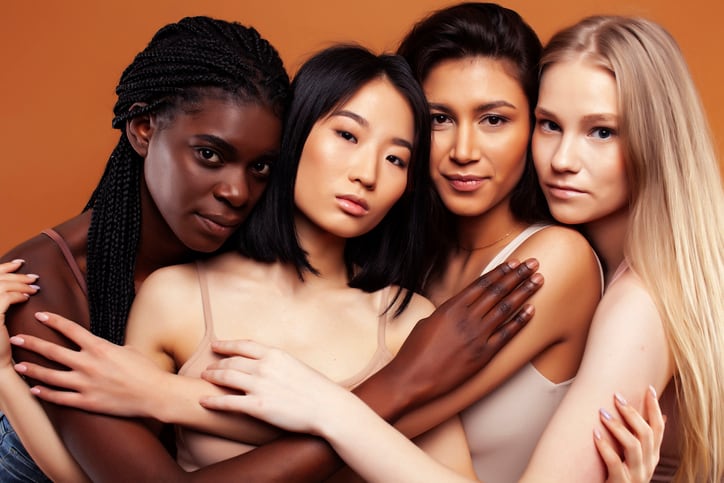Beauty for all was highlighted as one of CosmeticsDesign-Europe’s top five beauty trends to watch in 2021 – a movement that would see an increasingly inclusive industry where consumers of all ages, genders and race felt ‘understood’. And news this week that personal care major Unilever would drop the descriptor ‘normal’ from all its packaging and advertising to “champion a new era of beauty” sets the scene well on efforts this year to carve out a more inclusive beauty market that catered to a plethora of consumers.
Amira Freyer-Elgendy, consumer analyst at data analytics and consulting firm GlobalData, said the move by Unilever had to be commended.
‘Abnormal’ eczema, textured hair, sensitive scalps is a damaging narrative
“Any initiative to make marginalised shoppers more comfortable or feel more included is commendable,” Freyer-Elgendy told CosmeticsDesign-Europe.
“Eczema or dry skin, thinning hair, grey hair, acne, textured hair, rosacea, sensitive scalps – these sometimes do need more tailored products,” she said, but presenting these needs as ‘abnormal’, reinforced by the presence of ‘normal’ products, was a “damaging narrative”.
“The beauty industry has had a hand in shaping beauty ideals across the years and a company using that power and influence to make beauty standards kinder and more inclusive is respectable.”
More action from larger beauty players, Freyer-Elgendy said, would be significant in the drive towards a more inclusive category.
“It's vital that larger beauty companies try to minimise the negative influence the beauty industry can have on shoppers. Any pledge to limit photoshop editing or inclusive action is a step in the right direction.”
On the packaging design side, efforts to include braille would also provide access and experiences to visually impaired consumers and easy-to-hold designs would enable beauty and personal care products to be used by more consumers.
Skin tone for inclusivity a ‘very visual and obvious marker’
Within beauty, Freyer-Elgendy said skin care and makeup contained more norms that excluded people versus a category like fragrance; many sunscreens, for example, left a white caste on darker skin tones. And skin tone inclusivity, she said, was one of the focal topics in this wider beauty inclusivity conversation.
“Standards have been raised. Consumers rightly expect more from brands nowadays – with skin tone inclusivity as a clear initial indicator for diversity. This is a very visual and obvious marker, especially in the context of Black marginalisation gaining more attention in the public consciousness across the last year.”
However, getting beauty inclusivity ‘right’, without backlash for efforts being seen a marketing ploy, was not easy for brands in the space.
“This is difficult to navigate, but one feature of negatively received diversity is when it seems like a backtracked decision or one that is motivated by money,” Freyer-Elgendy said.
Inclusive beauty business needs to ‘involve the community’ you cater to
“How to communicate authenticity and genuine intent is a key question for companies, and there are a few ways to do so,” she said.
On the money side, donating all or part of profits on certain products could be one way of proving an inclusive beauty development was genuine, she said. Initiatives that involved or came from marginalised groups – Black-owned businesses being one such example – were also going to be considered “more genuine”.
“Black-owned businesses that are inclusive of darker skin tones will not receive any backlash, because it’s clear that the goal is to alleviate a problem that actually affects the people involved.”
Making sure teams behind inclusive product development, therefore, were “just as inclusive as the product claims to be” was especially important, Freyer-Elgendy said. “Involve the community that you hope to cater to.”




